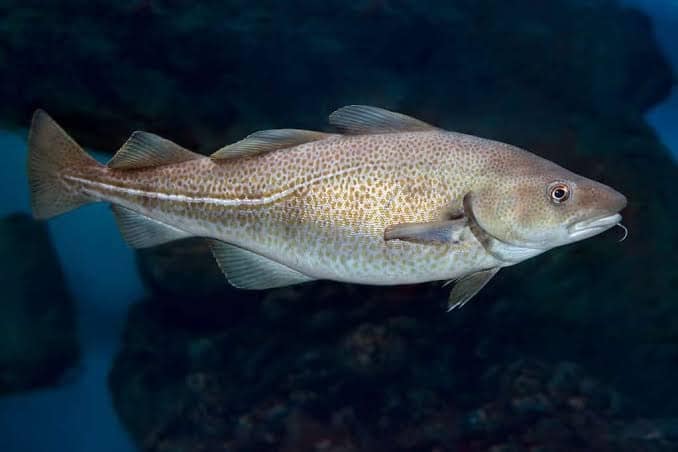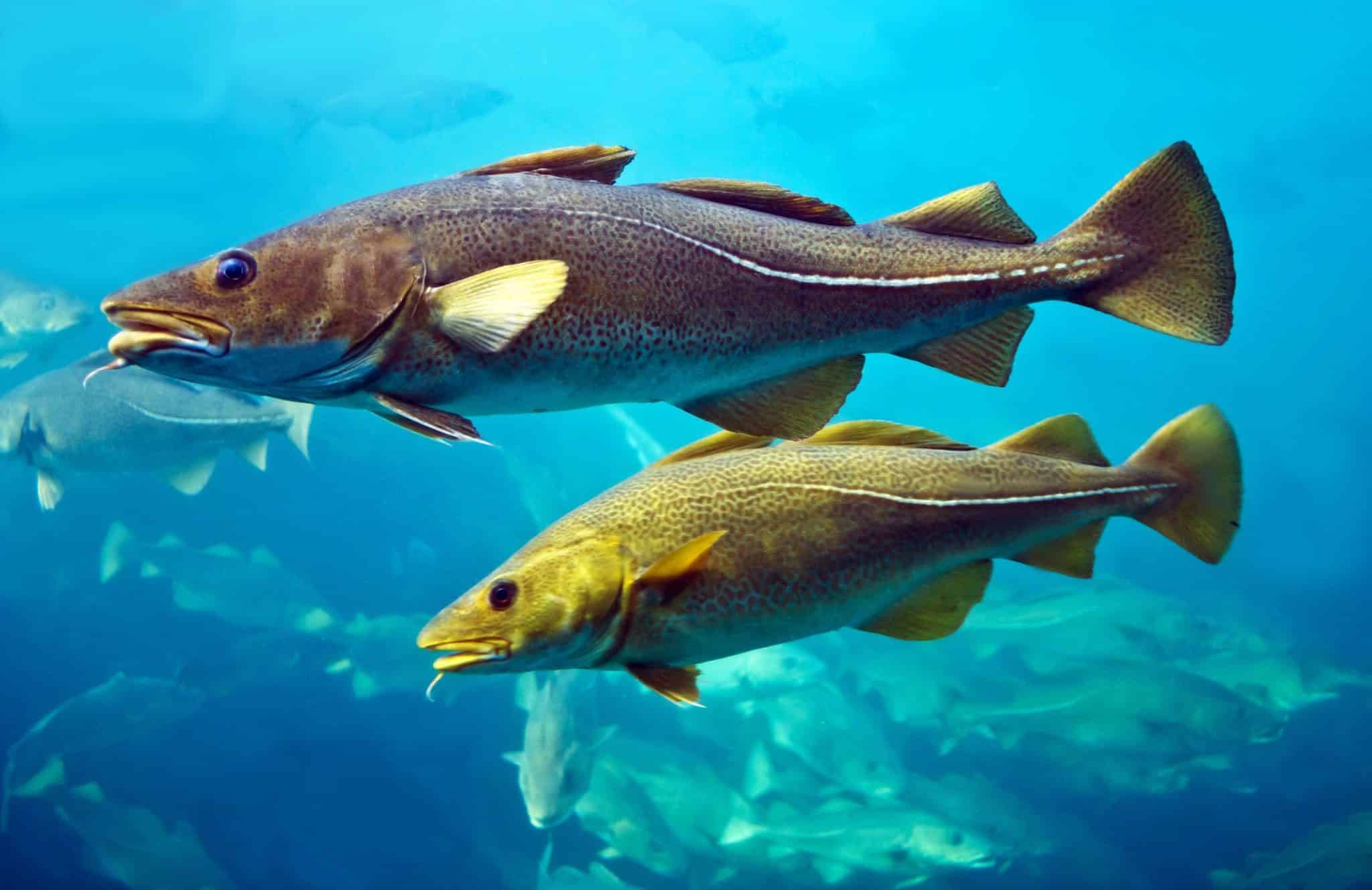If you're a seafood lover or someone who appreciates learning about marine life, you probably might have asked yourself, “does cod fish have scales and fins?” Well, you're not alone.
Quick Facts About Cod Fish
Cod fish is a fascinating creature that has been enjoyed as a culinary delight for centuries. It is known for its delicious taste and versatility in cooking.
Knowing whether cod fish have scales and fins is essential for those who enjoy cooking and eating seafood. With this knowledge, you can make informed decisions when selecting or preparing your next meal.
In this article, we will dive deep into all things cod fish-related, including their anatomy and unique characteristics that makes it so tasty and well popular among many.
We'll also uncover some amazing facts about this fish you absolutely have no idea of. This way, you can impress your friends and family with your newfound knowledge during your next seafood dinner or fishing trip.
Keep reading to find out more!
- Does Cod Fish Have Scales and Fins?
- How Many Fins Does Cod Fish Have?
- Can You Eat Scales on Cod?
- Does Cod Fish Have Bones?
- Is it Safe to Eat The Skin of Cod?
- Does Cod Fish Contain Mercury?
- Can You Eat Cod Fish Raw?
- Is Cod Freshwater or Saltwater?
- Can Cod Fish Survive in a Freshwater Habitat?
- Are Cod Fish Endangered Species?
- What Fish is Similar to Cod?
- Is Cod Fish Kosher?
- What are the Health Benefits of Eating Cod Fish?
- Final Verdict
Does Cod Fish Have Scales and Fins?
YES, cod fish does indeed have both scales and fins.
Let's start with the scales. Like most other types of fish, the body of a cod fish is covered in tiny overlapping scales that act as a protective layer. These scales help to reduce friction in the water and provide some defence against predators.
Now let's move on to the fins. Cod fish have several different types of fins that serve various purposes. These various fin structures allow cod fish to navigate through water with ease, providing stability and control over their movements.
How Many Fins Does Cod Fish Have?
When it comes to fins, this species has a total of five – the dorsal fin, caudal fin (also known as the tail fin), anal fin, pelvic fin, and pectoral fin.

The dorsal fin is located on the top of the fish's body and helps with stability while swimming. It extends from near the head all the way to the base of the tail. The caudal fin, on the other hand, is responsible for propulsion and steering in water. Its shape allows for efficient movement through different depths and currents.
We have the anal fin which can be found on the underside of a cod fish near its rear end. This small but important appendage assists with balance during swimming manoeuvres.
The pectoral fins are located on each side of the fish near its head. They help the cod maintain stability while swimming and aid in steering movements. Moving towards the rear end of the fish, we find the pelvic fins. These are positioned closer to the belly area and assist with maintaining balance during swimming.
These five fins work together harmoniously to enable cod fish to navigate their aquatic environment with precision and agility. Whether they are gliding through open waters or manoeuvring around obstacles, these fins play a vital role in their survival.
Can You Eat Scales on Cod?
When it comes to enjoying a delicious plate of cod, many people wonder if they can eat the scales along with the fish. Well, let me shed some light on this matter!
Cod fish does have scales, but they are quite small and not particularly appetizing. In fact, most people prefer to remove them before cooking or eating the fish. The scales can be tough and can defame the smooth texture that makes cod so enjoyable.
If you happen to come across a piece of cod with its scales intact, fear not! It's perfectly safe to eat them if you wish. However, keep in mind that consuming the scales may alter your dining experience.
So there you have it – while cod fish scales are technically edible, most people opt for scale-free cod for a more pleasant culinary experience. As always, personal preference plays a significant role in how we choose to enjoy our seafood delicacies!
Does Cod Fish Have Bones?
Of course! Cod fish does have bones! However, these bones are relatively large and easy to remove, making them less of a concern when enjoying this delicious seafood.
The larger bones in cod fish are typically found along the spine and can be easily taken out with a gentle hand.
This process is usually done before cooking or preparing the fish for consumption. Once removed, you're left with boneless fillets that can be cooked in various ways.
Is it Safe to Eat The Skin of Cod?
When it comes to consuming cod fish, many people wonder if it's safe to eat the skin. The answer? Absolutely! In fact, the skin of cod is not only safe but also adds a delightful texture and flavour to the dish.
The skin of cod fish is thin and delicate, crisp when cooked properly. It provides a lovely contrast to the tender flesh underneath. Whether you're grilling or pan-frying your cod, leaving the skin intact can help preserve moisture and prevent it from drying out.
Does Cod Fish Contain Mercury?
Mercury is a naturally occurring element that can be found in various forms, including in the water bodies where fish live. It is important to understand the level of mercury present in different fish species, as high levels can have adverse effects on human health, particularly for pregnant women, nursing mothers and young children.
When it comes to cod fish, you'll be glad to know that they generally contain lower levels of mercury compared to some other types of fish. This makes them a safe and healthy choice for consumption.
Cod are typically smaller carnivorous fish that feed on other marine species. As they are not at the top of the food chain and do not consume large quantities of prey contaminated with mercury, their mercury levels tend to be relatively low.
While it's good news that cod fish generally contain lower levels of mercury, it's still essential to practice moderation when consuming any type of seafood. By doing this, you can continue to enjoy this delicious seafood option without worrying about excessive exposure to mercury.
Can You Eat Cod Fish Raw?
Raw fish is commonly consumed in dishes like sushi and sashimi, but does this apply to cod as well? Continue reading!
While some types of fish are safe to consume raw, it is generally not recommended to eat cod fish raw. Cod can contain parasites that may pose health risks if not properly cooked. Cooking the fish thoroughly helps eliminate these potential parasites and ensures food safety.
Raw consumption of any type of seafood carries a certain level of risk, including the possibility of bacterial contamination. Therefore, it is always advisable to cook your cod thoroughly before consuming it.
If you enjoy eating raw seafood, there are other options available that are considered safer than consuming raw cod. Popular choices include salmon and tuna which are often used in sushi preparations due to their texture and taste when eaten uncooked.
Is Cod Freshwater or Saltwater?
When it comes to the habitat of cod fish, they are primarily found in saltwater environments. Cod fish are known for their ability to adapt and thrive in cold waters, making them a common sight in the North Atlantic Ocean.
These resilient creatures can withstand temperatures as low as -1.8 degrees Celsius (-29 degrees Fahrenheit). They have been spotted along the coastlines of countries such as Norway, Iceland, Canada, and the United States.
Cod fish prefer deep-sea habitats with rocky bottoms or sandy terrain where they can hide and hunt for food. The North Atlantic offers them an abundance of prey like smaller fish, squid, shrimp, and crustaceans.
Despite their preference for saltwater habitats, there have been a few instances where cod fish were found in freshwater lakes or rivers. However, these occurrences are quite rare and often attributed to factors like changes in water salinity due to natural phenomena or human interference.
Can Cod Fish Survive in a Freshwater Habitat?
The answer is NO! Cod fish are not equipped to survive in freshwater habitats due to their physiological adaptations.
They have evolved over millions of years to live specifically in saltwater environments. Their bodies are adapted to regulate osmotic pressure, which differs significantly between saltwater and freshwater.
In saltwater, cod fish maintain a higher concentration of salts inside their bodies compared to the surrounding water. This allows them to stay hydrated while preventing excess water from entering their cells through osmosis.
In contrast, if they were placed in a freshwater habitat where the surrounding water has lower salt concentrations than their body fluids, they would risk losing essential salts and becoming dehydrated.
Moreover, cod fish have specialized gills that allow them to extract oxygen from seawater efficiently but may struggle with extracting enough oxygen from freshwater sources due to differences in dissolved oxygen levels.
While cod fish may occasionally swim into freshwater habitats, they generally do not thrive or reproduce successfully outside of their natural salty habitat.

Are Cod Fish Endangered Species?
The question of whether cod fish are endangered species is one that sparks concern among conservationists and seafood lovers alike.
Overfishing has significantly impacted cod populations, leading to their decline in certain regions. In fact, some studies suggest that historical overfishing has caused cod stocks to plummet by as much as 80%. This alarming trend has prompted efforts to implement stricter fishing regulations.
However, it's important to note that not all cod populations are currently endangered. While Atlantic cod stocks have been heavily depleted, Pacific cod populations appear to be more stable. Nonetheless, ongoing conservation measures are necessary to ensure the long-term sustainability of these iconic fish for future generations to enjoy.
What Fish is Similar to Cod?
- Haddock: Haddock belongs to the same family as cod and shares many similarities in terms of taste and texture. It has a mild flavour with a slightly sweet undertone, making it an excellent substitute for cod in various recipes.
- Pollock: Pollock has a white flesh and flakes easily when cooked, just like cod. It also has a mild flavour but with a slight hint of earthiness. Many people enjoy using pollock as an alternative to cod in dishes such as fish tacos or breaded fillets.
- Halibut: Halibut can also be considered as a substitute for cod, although it tends to have a firmer texture and richer flavour. However, both halibut and cod are versatile fishes that can be prepared in numerous ways.
While these three fishes - haddock, pollock, and halibut - are often compared to cod due to their similarities in taste and texture, each still brings its own unique qualities to the table. Choosing which one will depend on personal preference and the specific recipe you're preparing.
Is Cod Fish Kosher?
In Jewish dietary laws (kashrut), there are specific guidelines that determine whether a particular food is considered kosher or not. These rules include regulations about what animals can be consumed and how they must be slaughtered.
Cod fish falls into the category of "kosher fish" according to these dietary laws. For a fish to be considered kosher, it must possess both scales and fins. And based on what we know now, codfish possess both. This means that cod is permissible to eat for those who follow kosher practices.
What are the Health Benefits of Eating Cod Fish?
Cod fish is not only delicious, but also offers a number of health benefits that make it a great addition to your diet.
- It's rich in lean protein content that helps promote feelings of fullness while supporting muscle growth and repair. It's also low in fat.
- It's high omega-3 fatty acid content. Omega-3s are known for their anti-inflammatory properties and have been linked to various health benefits, including improved heart health and reduced risk of chronic diseases such as diabetes and arthritis.
- Cod fish is an excellent source of vitamins and minerals. It contains significant amounts of vitamin B12, which plays a crucial role in maintaining brain function and nerve health. Cod fish also provides vitamin D, which promotes bone health by aiding in calcium absorption.
- Cod fish is also rich in selenium, a powerful antioxidant that supports immune function and helps protect against cell damage. It also contains phosphorus, magnesium, and potassium – essential minerals that contribute to overall wellbeing.
Final Verdict
It is clear that cod fish does have both scales and fins. This popular seafood option not only provides a delicious taste but also offers several health benefits. With its low calorie and fat content, along with high levels of protein and other essential nutrients, cod fish can be a valuable addition to a balanced diet.
So the next time you're planning your menu or looking for a tasty seafood option, consider adding some mouthwatering cod dishes into your diet. Not only will you satisfy your taste buds, but you'll also reap the numerous health benefits that come along with enjoying this delectable fish!

My name is Iyanu Kolawole, I’m a professional content writer and web developer. I have always been passionate about writing and developing my coding skills. I started my career as a content writer and have written for several companies and brands. I am also a skilled web developer and have built several websites for businesses and individuals.I am a hardworking individual who is always looking to improve my skills. I am constantly striving to learn new things and to be the best at what I do. I am also a very friendly person and enjoy working with others.
The content is intended to augment, not replace, information provided by your clinician. It is not intended nor implied to be a substitute for professional medical advice. Reading this information does not create or replace a doctor-patient relationship or consultation. If required, please contact your doctor or other health care provider to assist you to interpret any of this information, or in applying the information to your individual needs.

